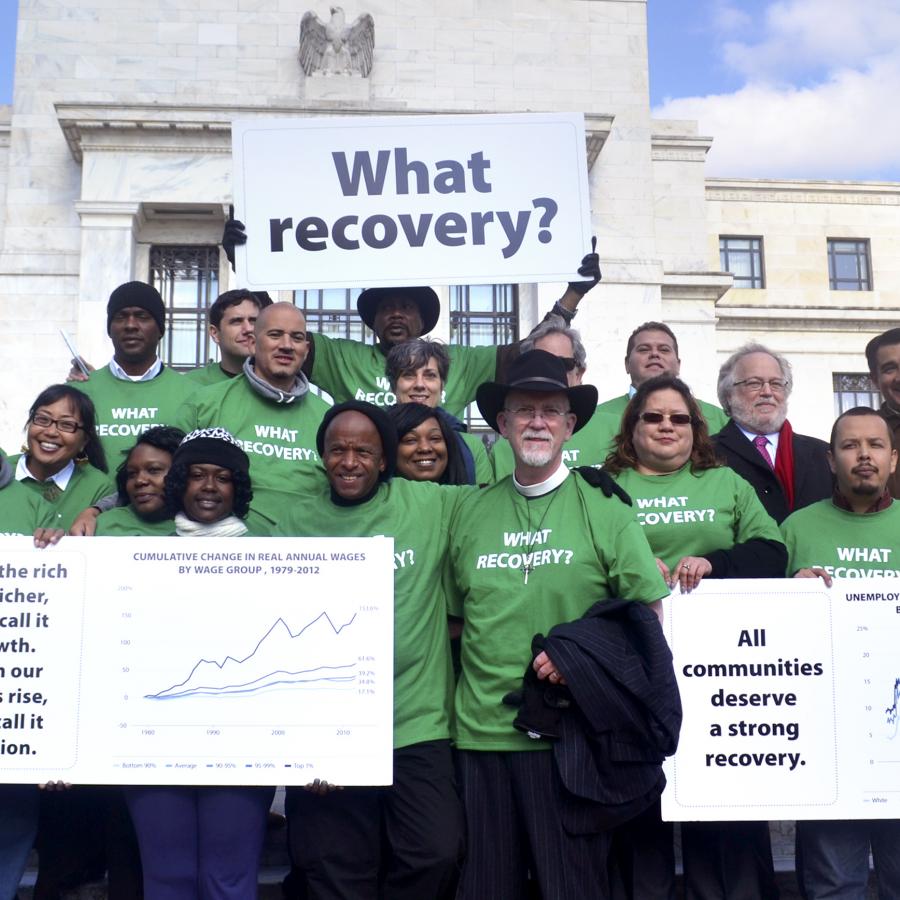Unemployment: In an equitable economy, everyone who wants to work would have a good job.
Insights & Analyses
- Although unemployment rates among white people and people of color followed a similar trend between 1980 and 2010, the rate for people of color has been consistently higher by roughly 5 percentage points. In 2022, the gap decreased to 2 percentage points.
- The unemployment rate in the District of Columbia (30%) is nearly double that of the next highest state, Rhode Island (18%), for people living below 200% of the poverty line.
- In 2022, Black and Native American people had the highest unemployment rates among all racial and ethnic groups reported by the census, while Asian Americans and white people had the lowest rates.
- Since 1990, Native Americans have consistently had the highest unemployment rates. In 2022, 10 percent of Native American men and 7 percent of Native American women were unemployed. Among Native Americans, those with Crow ancestry and other Alaskan Native ancestry faced particularly high unemployment rates, with levels reaching 16 percent.
Drivers of Inequity
A variety of historical and contemporary factors cause Black, Native American, Latinx, and other workers of color to experience unemployment at much higher rates than white workers. Employer discrimination against Black workers starts at the early stages of the hiring process through the duration of employment. A recent Pew Research Center survey found that 40 percent of Black workers reported experiencing workplace discrimination in hiring, pay, or promotions compared to only eight percent of white workers. In addition, racial segregation and disinvestment mean that students of color have far less access to well-resourced, high-quality schools. Transportation, affordable childcare and housing near job centers, and credit checks are also significant barriers to employment. Finally, racist policing practices and the criminal legal system disproportionately incarcerate Black and Latinx men who then face employer discrimination due to their criminal records.
Strategies
Grow an equitable economy: Policies to reach full employment for all
- Grow new good jobs by making smart investments in infrastructure projects, supporting economic development strategies to grow high-opportunity industries, and helping entrepreneurs of color start and scale-up their businesses.
- Reduce employment barriers for people with records by "banning the box" — eliminating questions about conviction history on job applications (for both private and public employers).
- Connect unemployed and underemployed workers to the jobs created by new development through targeted local hiring, community workforce agreements, and community benefits agreements.
- Invest a portion of infrastructure investments in job training.
- Implement sector-focused workforce training and placement programs and apprenticeships that create pathways to good jobs for workers with barriers to employment.
- At the federal level, institute a federal jobs guarantee, dedicate 1 percent of infrastructure investments to a fund for inclusive job and contracting supports, set aside a share of public contracts for businesses owned by people of color to mirror area demographics, and ensure that recently incarcerated people receive essential identification documents to support job attainment.
Strategy in Action
Per Scholas is a national organization that works to advance economic equity by providing no-cost training for technology careers. Operating in more than 20 metropolitan areas across the nation, Per Scholas partners with tech employers, policymakers, and community-based organizations to create tech career pathways for program participants and support increased diversity in the tech sector. In addition to focusing on hands-on technical skills development, its curriculum includes professional skills learning to prepare job seekers for success in the labor market. In 2023, 87 percent of the organization’s program participants were people of color, and 43 percent were women. And in that year, over 2,600 graduates went on to secure jobs with an average annual salary of $48,000. To date, more than 25,000 people have graduated from Per Scholas’ training program. Read more.
Photo: Per Scholas

Resources
- Reports: Race and the Work of the Future: Advancing Workforce Equity in the United States; 10 Principles for a Federal Job Guarantee; Exploring Targeted Hire; Understanding Long-Term Employment; The Impact of COVID-19 on Labor Markets and Inequality; The Long History of Discrimination in Job Hiring Assessments; Labor Shortages are the New Normal; The American Workforce: A Snapshot of Race, Ethnicity and Gender; Workers want unions, but the latest data point to obstacles in their path
- Data: Workforce Equity Dashboard; Opportunity Insights Economic Tracker; Metro Monitor 2024; State of Working America; US Bureau of Labor Statistics Data Tools




